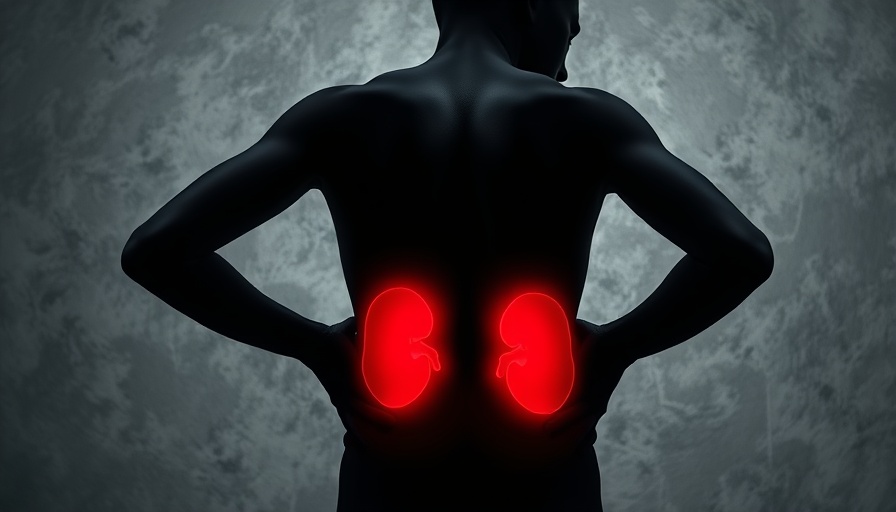
Revolutionizing Treatment for CKD and T2D
In a groundbreaking development for patients battling chronic kidney disease (CKD) and type 2 diabetes (T2D), the recent CONFIDENCE trial results unveil a promising combination therapy. When the SGLT2 inhibitor empagliflozin was paired with finerenone, a nonsteroidal mineralocorticoid receptor antagonist (MRA), researchers found a substantial and persistent reduction in albuminuria, a key marker in both conditions. Presented at the 62nd European Renal Association (ERA) Congress and published in The New England Journal of Medicine, these findings mark a significant leap in understanding how to improve kidney health for these patients.
Understanding Albuminuria's Role
The results of the study revealed that an impressive 70% of participants receiving the combination therapy achieved the American Diabetes Association’s recommended urinary albumin-to-creatinine ratio (UACR) reduction target of over 30%. Lead researcher Dr. Rajiv Agarwal stated, "Since UACR is a key mediator of kidney and cardiovascular outcomes, these results are highly relevant for clinical decision-making." This shift highlights an evolving approach in nephrology — moving towards upfront combination therapy rather than a traditional stepwise approach.
Evaluation of Clinical Benefits
Despite the optimism surrounding these results, some healthcare professionals echo a sentiment of caution. Dr. Mustafa Arici, session co-chair and nephrology professor, noted the absence of clinical endpoints in the study, such as decreased mortality or reduced need for dialysis. While surrogate outcomes like UACR are vital indicators of kidney function, the clinical implications of these findings still require further investigation.
The Standard of Care and Future Directions
The CONFIDENCE trial adds a significant piece to the mosaic of treatment strategies for CKD and T2D patients. Combining drugs like SGLT2 inhibitors and MRAs is based on a broader treatment framework that already includes angiotensin-converting enzyme (ACE) inhibitors, angiotensin receptor blockers (ARBs), and GLP-1 receptor agonists. Dr. Peter Rossing, a co-investigator, underscores the need for more precise guidelines regarding how to implement and combine these therapies effectively.
The Value of Comprehensive Treatment Strategies
As Dr. Rossing pointed out, emerging evidence from hypertension and heart failure combination trials suggests that employing a multifaceted approach might yield better patient outcomes. This insight leads to the guiding principle of providing "some of all, instead of all of some," which encourages a comprehensive use of medications tailored to individual patient needs.
Conclusion: Turning Hope into Reality
The findings from the CONFIDENCE trial offer valuable insights for healthcare providers treating CKD and T2D patients. While the focus on albuminuria as a surrogate marker is a step forward, it underscores the importance of further research into the long-term clinical benefits of combined therapies. As medical professionals leverage this information, they can better construct treatment plans that are more effective and personalized for the unique challenges their patients face.
In this rapidly evolving landscape, staying informed about advancements in combination therapy is crucial for both healthcare practitioners and patients alike. Empower yourself with knowledge and engage with your healthcare provider about the best strategies for managing CKD and T2D.
 Add Row
Add Row  Add
Add 




Write A Comment